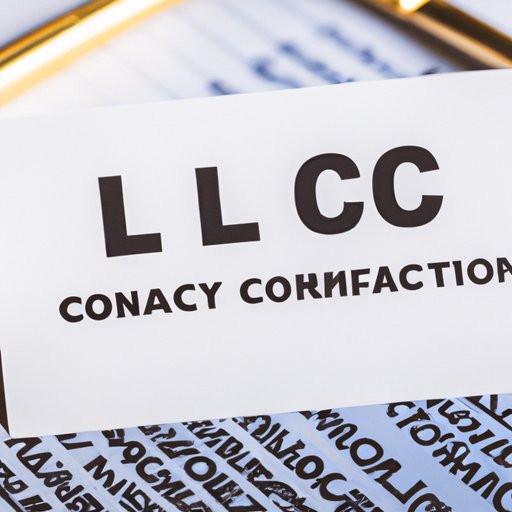
Introduction
Starting a small business is an exciting venture, but it can also be overwhelming. One important decision is determining the business structure, with limited liability companies (LLCs) being a popular choice among small business owners. LLCs provide the benefits of both corporations and partnerships, including liability protection and flexible tax options. This article serves as a comprehensive guide for those interested in forming their own LLC.
Research and Select a Business Name
The first step to forming an LLC is selecting a unique and memorable name for the business. It should also comply with state naming guidelines and be available for use. Conducting a name search with the Secretary of State’s office and United States Patent and Trademark Office (USPTO) can ensure the availability of the name. Additionally, businesses must include a recognizable identifier, such as LLC or L.L.C., after the name.
File Articles of Organization
The Articles of Organization serve as the legal documents that establish the LLC’s structure, including its purpose, ownership, and management. These documents are filed with the Secretary of State’s office, along with the required filing fee. Each state has different requirements for Articles of Organization, so researching the specific state’s guidelines is important.
Appoint a Registered Agent
A registered agent is designated to receive legal documents, tax notices, and other official correspondence on behalf of the LLC. Most states require LLCs to have a registered agent, who must have a physical address within the state. Business owners can either act as their own registered agent or hire a professional service.
Obtain an Employer Identification Number (EIN)
An EIN, also known as a federal tax identification number, is needed for tax filing and reporting purposes. It is also required for hiring employees and opening a business bank account. Business owners can apply for an EIN online through the IRS website, and the process is free of charge.
Draft an Operating Agreement
While an operating agreement is not required for most states, it is still highly recommended for LLCs with more than one member. The agreement outlines the business structure, management, and ownership, as well as policies and procedures for decision-making and communication. A well-drafted operating agreement can prevent misunderstandings and disputes among members.
Obtain Necessary Permits and Licenses
Depending on the type of business and location, LLCs may need to obtain various permits and licenses to operate legally. This can include local and state business licenses, zoning permits, and industry-specific licenses. Business owners can research the specific requirements for their area through local and state agencies.
Comply with Ongoing Requirements
LLCs must adhere to ongoing requirements, such as annual reports and record-keeping. These requirements vary by state, so it is important to research and stay aware of the specific guidelines. Business owners can also consider hiring a third-party service to assist with compliance and record-keeping.
Conclusion
Forming an LLC can seem daunting, but by following these steps, small business owners can establish a solid foundation for their business. From selecting a unique and compliant name to complying with ongoing requirements, taking each step seriously can ensure a successful and legally sound business.





